We had an opportunity (one that’s rare these days for Americans) to visit Cuba. Because not everyone may have the opportunity to go to Cuba, we want to share as much as we can about our experience there. We have offered one recipe for a traditional dish, Moros y Cristianos. And now we’d like to explain a little about the capital city of Havana.
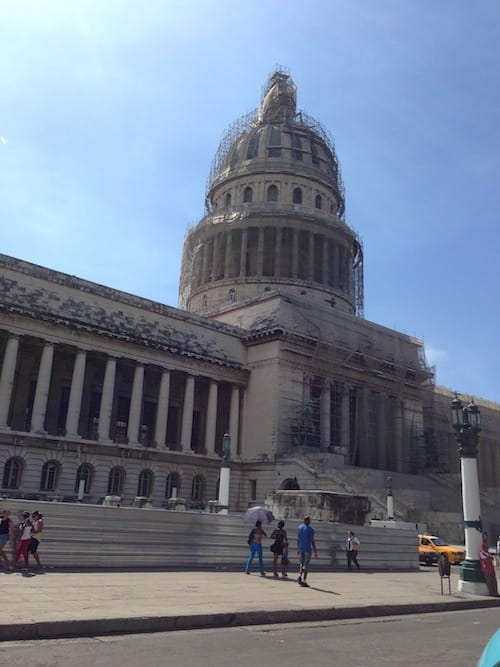
You may have images of Havana as a city loaded with history and style. And you would be correct. Havana has a population of around 2 million people. Its history is partly played out by the various districts into which Havana is divided. La Habana Vieja, Old Havana, was founded in 1607. It was the seat of Spanish power in colonial times. The area was filled with large churches, courtyards, market squares, fountains, and beautiful architecture.
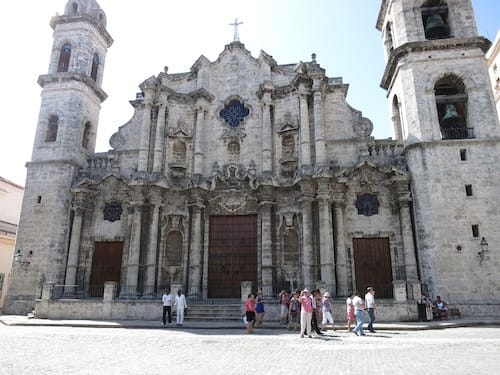
Havana became one of the main centers for shipbuilding in the Caribbean and an important commercial center. Old Havana has been named a UNESCO World Heritage Site and there are efforts to invest in and rejuvenate the area. Most of the original buildings have been converted into museums, restaurants, and hotels, but the look and feel of the 17th and 18th-century Conquistadors continues even today.
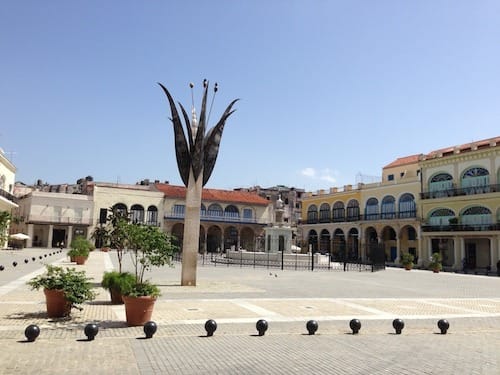
Another major district is Centro Habana, which is a bit newer, born out of the sugar boom of the 19th century. Around the turn of the Century (1898 brought Cuba’s independence from Spain) Havana became the place to see and be seen, especially by wealthy Americans, including mobsters Bugsy Segal and Meyer Lansky, who helped fuel the area’s prosperity.
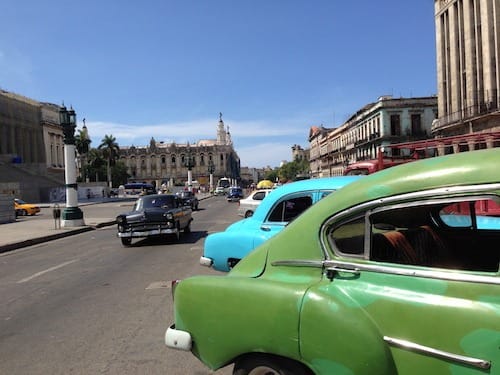
Hotels, restaurants, casinos, mansions, and all the elegance of the days’ glitterati earned the title of “Paris of the Caribbean” for then-bustling Havana. The area has severely deteriorated, and the lack of habitable housing is evident. Despite this fact, Centro Habana, like many city centers is the most densely populated part of Havana.
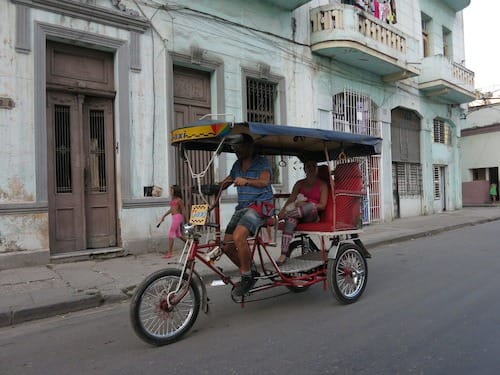
Interestingly, Barrio Chino, or Chinatown is located in Centro Habana. Back during the sugar boom, Cantonese workers were brought to work in the cane fields. During that time, Havana had the largest Chinese community in Latin America. Now, there is a small area, only a block or two, with colorful Chinese facades, but very little else ethnically relevant, and no Chinese inhabitants.
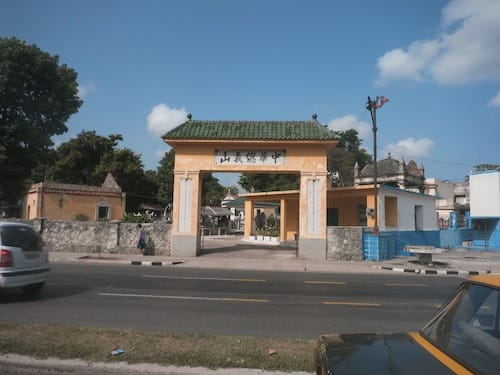
We went to a “Chinese” eatery that had some dishes with a “Chinese essence.” They were accompanied on the menu by other vaguely ethnic cuisines, such as the ubiquitous pizza and spaghetti we encountered throughout Havana.
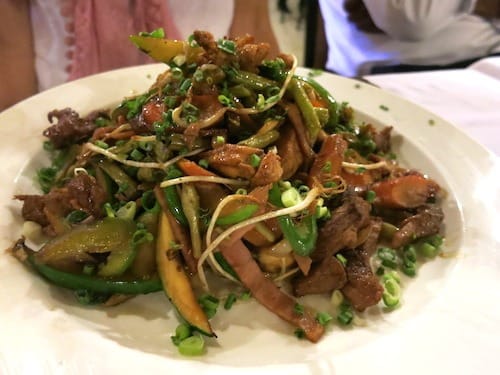
You can find more traditional Cuban dishes, and even a Cuban sandwich, if you go to a more touristic restaurant like Café TV in downtown Havana.
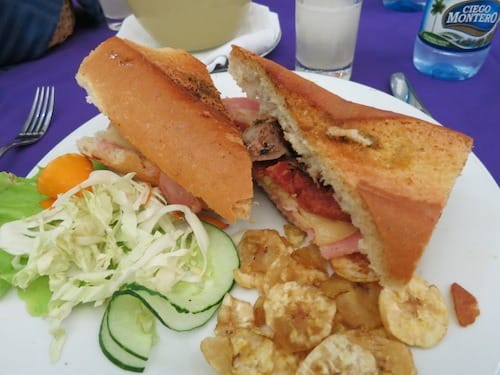
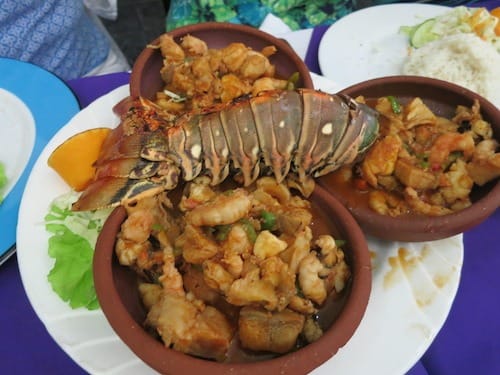
Here you can be treated to a live broadcast of a musical performance or comedy night.
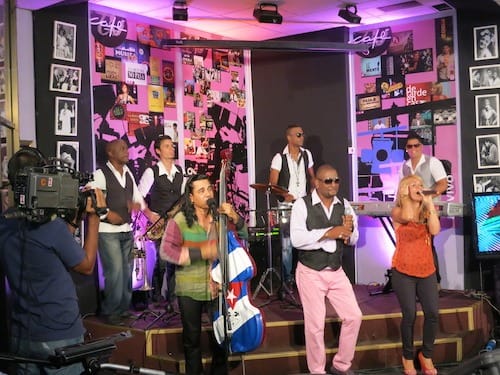
You would be wise to order a delicious sparkling frozen lemonade to drink with your meal. Cubans like their sweets, and you’ll see ice cream ordered often even during lunchtime.
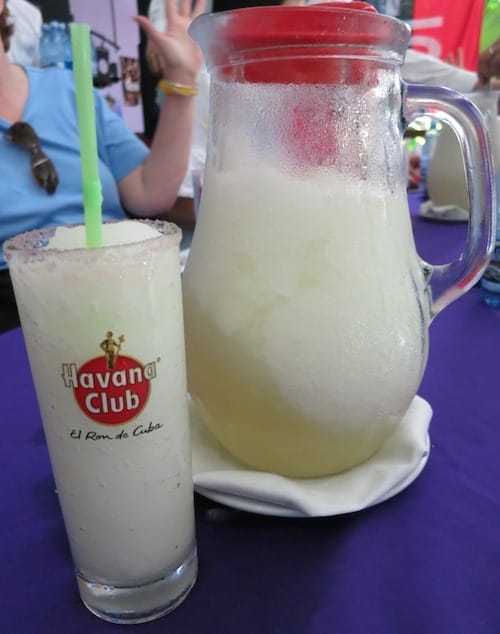
Cars are a big point of interest for visitors to Havana. Since the U.S. embargo in 1962, some 60,000 “classic” American automobiles are estimated to be on the roads in Cuba, many of them in Havana.
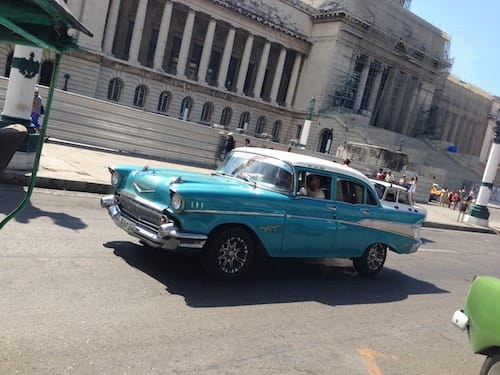
Because of the need to keep the vehicles, sometimes referred to as “yank tanks” or máquinas, rolling, their owners have become exceptionally creative auto mechanics, finding ways to keep the cars going without the proper parts or modern technology. And, because many people don’t have vehicles at all, the ones that are running are often used as taxis and packed with people needing to get from one place to another.

Still, it’s quite a site to see when you watch Chevy, Ford, Dodge and other American cars from the 50’s parade past you in a seemingly infinite stream.

Life is different in Havana. Resources are scarce. New products and technology are hard to come by. Plumbing is weak. And hot, humid weather can be oppressive. But the people are resilient. And gracious. And colorful. And patient. Our time spent in Havana gave us an opportunity to reflect on one of the main reasons we love to travel – to experience the food and culture of others around the world, and to learn from them. And that, we did.
THE QUICK BITE: We had an opportunity (one that is rare these days for Americans) to visit Cuba. Because not everyone may have the opportunity to go to Cuba, we want to share as much as we can about our experience there. Here we share a little about the capital city of Havana.

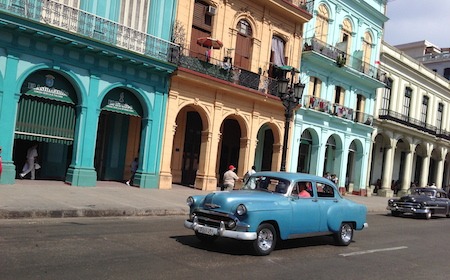
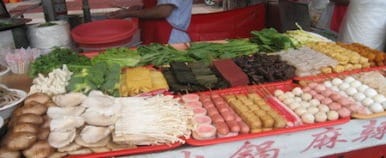
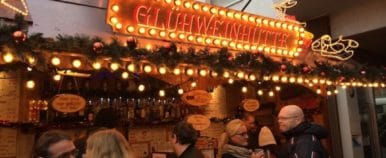
23 Comments
Thanks for stopping by Michelle. It was a very special trip to be sure. We feel very privileged to have been able to go. And yes, the food sure was yummy! 🙂
Thank you for the beautiful tour of Cuba. I know that this is a place I might not be lucky enough to visit. I would love to see all those old Chevys, buildings, and the food – oh my!
We are American and went on a people to people cultural exchange. They are starting to bring in cars from other countries there were Honda’s, Hyundai’s, Audi’s and even a few BMW’s and Mercedes. The majority of people cannot afford cars and get around on the bus or shared rides. If you get a chance to go you should it’s a beautiful country with beautiful people.
I have a real itch to go to Cuba but don’t want to do a “people to people” tour because one of the main things I want to do is snorkeling and I can’t find a trip that has that. Are you American and went on a “people to people” or were you able to just go on your own? I don’t understand why they don’t import cars from Japan or some other country than the U.S. Can they not afford them or is there another reason? My sister would love to get rid of some of her husband’s “classic cars” so maybe I’ll tell her to put them on a boat to Cuba!
Hopefully, it is only a matter of time before we lift the US trade and visiting embargo on Cuba. I just read an article about how we are contemplating selling arms to the Vietnamese government run by the Communist party. I realize that there is a Cuban exile community in the US that opposes lifting the embargo, but philosophically, morally and economically, it makes no sense to treat Cuba differently than Vietnam or China.
Fascinating and interesting. I think you summed it up best when you described your gracious hosts in the last paragraph. Often that’s what we remember the most — the kindness of strangers!! Well done!
Thanks for the tour of Havana. I especially enjoyed the cars.
So want to go to Cuba! It’s amazing how they have kept those old cars running and in such great shape. Thanks for the post.
You will love it Alison! I took so many pictures that I had to off-load the ones I downloaded on my MacBook Air – it was completely full! Can’t wait to hear your stories.
Thanks! We went with a group so it wasn’t too hard for us. There certainly is a lot of paperwork. The hardest part was letting someone else be in charge of travel planning. We’re so used to doing it all ourselves I suppose we should consider it a luxury. 🙂
Thanks Betsy!
Leyla we loved the people of Cuba as well. They are incredibly resilient and hard-working. They make due with what they have and are happy with it. We all could take a lesson in life from them. Thanks for stopping by.
If you visit, you’ll be enamored by all these old cars. The fact that they keep them running is a miracle in and of itself. We traveled by car and by private bus most of the trip. We heard that the train system is incredibly slow and unreliable. People wait for hours. We had a dose of that when leaving. We waited at the Havana airport for 15 hours for our plane that was stuck with mechanical issues in Miami. That’s a whole other post – stay tuned. Thanks for stopping by Noel!
Hi Donna! Yes, Havana is definitely a city of contrasts. In many ways I felt like I had more questions about Cuba after visiting than before I went. I’m still doing lots of reading and it’s just fascinating. Thanks for stopping by!
I was in Cuba ten years ago. The vintage cars are fascinating. I found Havana to be such a city of contrasts – old and new together, beautiful restored buildings next to dilapidated ones. It felt surreal. Your post brought back memories. Thanks.
Wow, those cars are stunning! Cuba looks amazing, I would love to visit while it is stil in this state of not mass travel buzz
Havana is one of my favorite cities in the world! I spent two months there in the 1990s and I know things have changed hugely since then. Still, you mention scarcity and that was also my experience when I traveled. The Cuban people I met were quite amazing, stoic even. At the time there was strict rationing and even finding staples like milk could take the better part of a day. No matter. People stood in line for one another, sent someone running to tell friends about new supplies – kind and sharing despite the difficulties. Havana is a city of such soul, one I’d love to return to.
Very interesting post. It should be fun to visit Havana, but I think it’s rather difficult for us, as US citizens, isn’t it? I love the retro cars.
The old cars are so beautiful, lending even more to the impression of a city frozen in time. Great photos!
Looks like a great place to visit. Loved the retro cars~
This is so great to read Sue. I am headed to Cuba in Feb. and all this coverage got my so excited about the trip. I can see my camera is going to be busy. Thanks!
Thanks Doreen! We hope to go back and visit again. Truly a week was not long enough.
This was a lovely post. You’ve really captured the highlights of a first visit to Havana. It truly is a unique place and one that we enjoyed visiting very much.